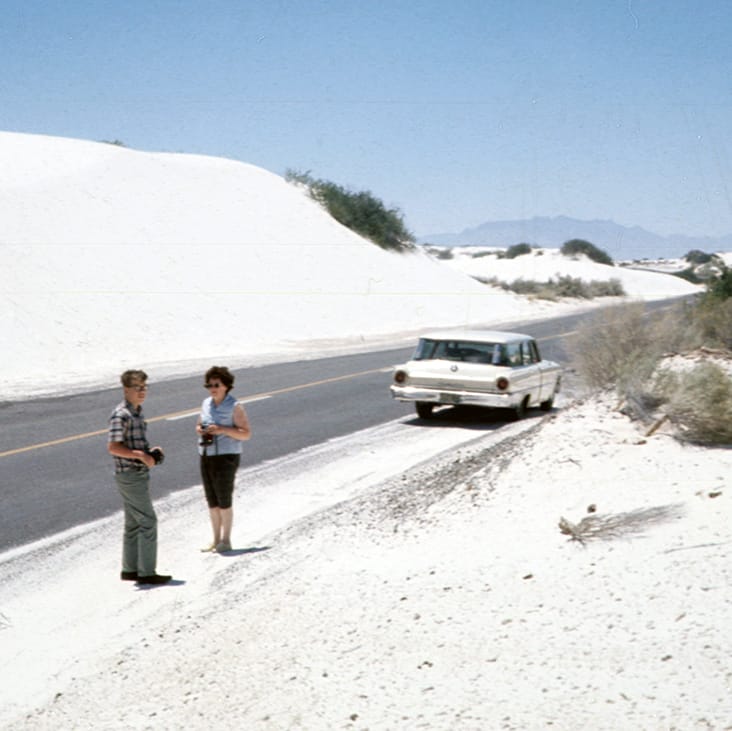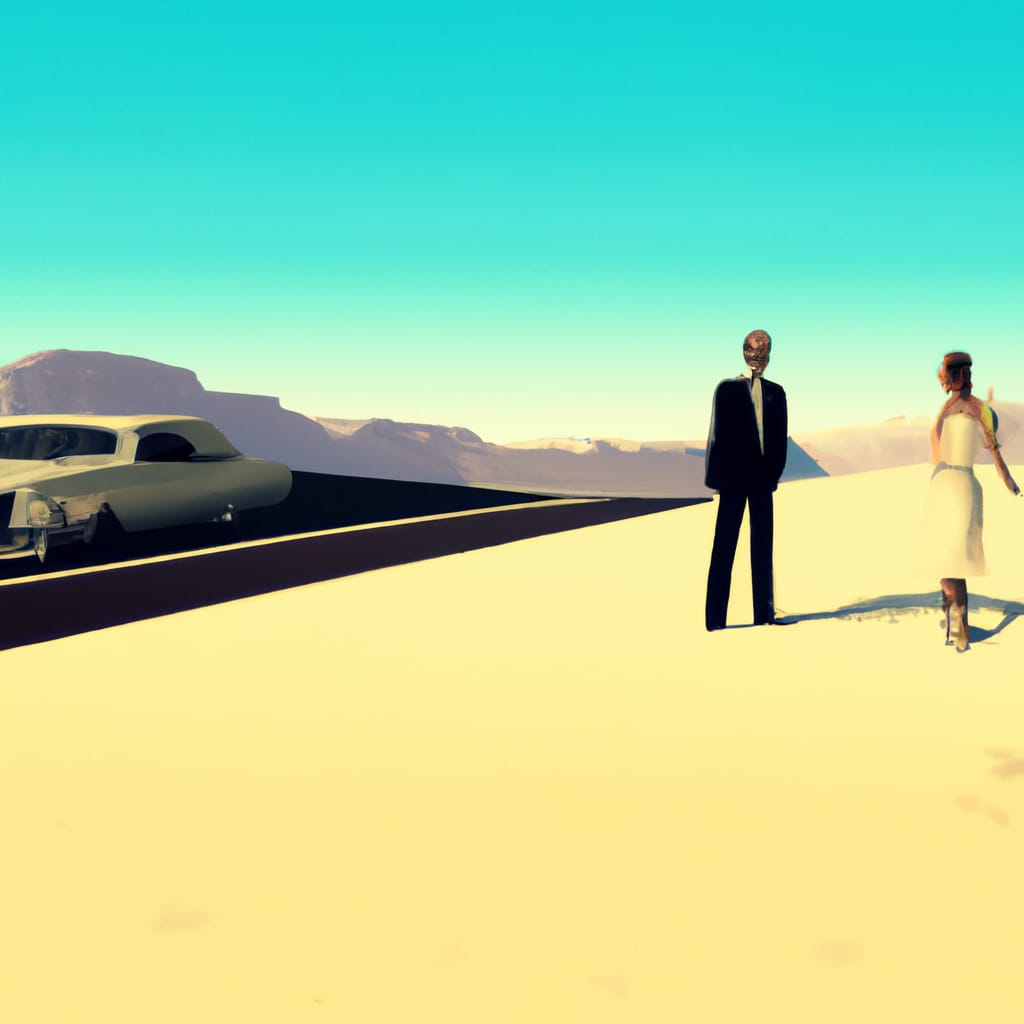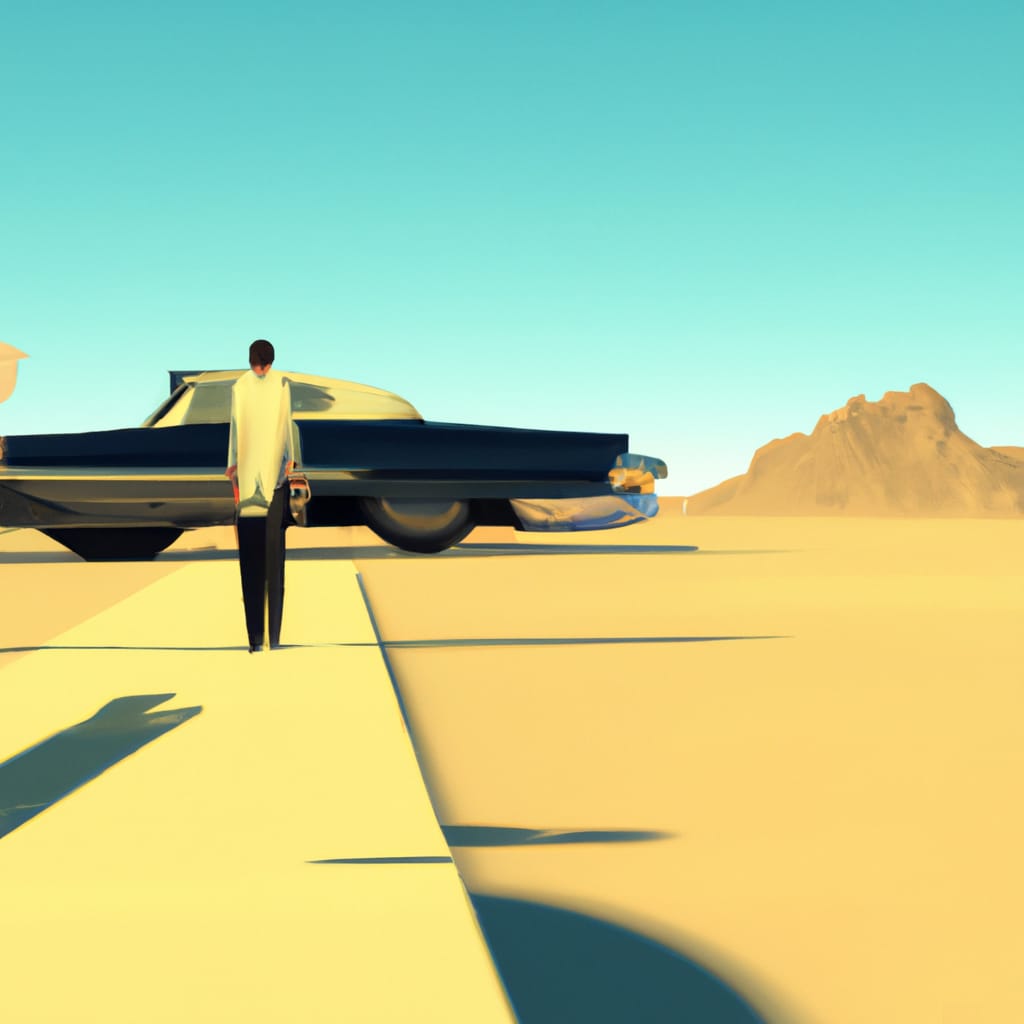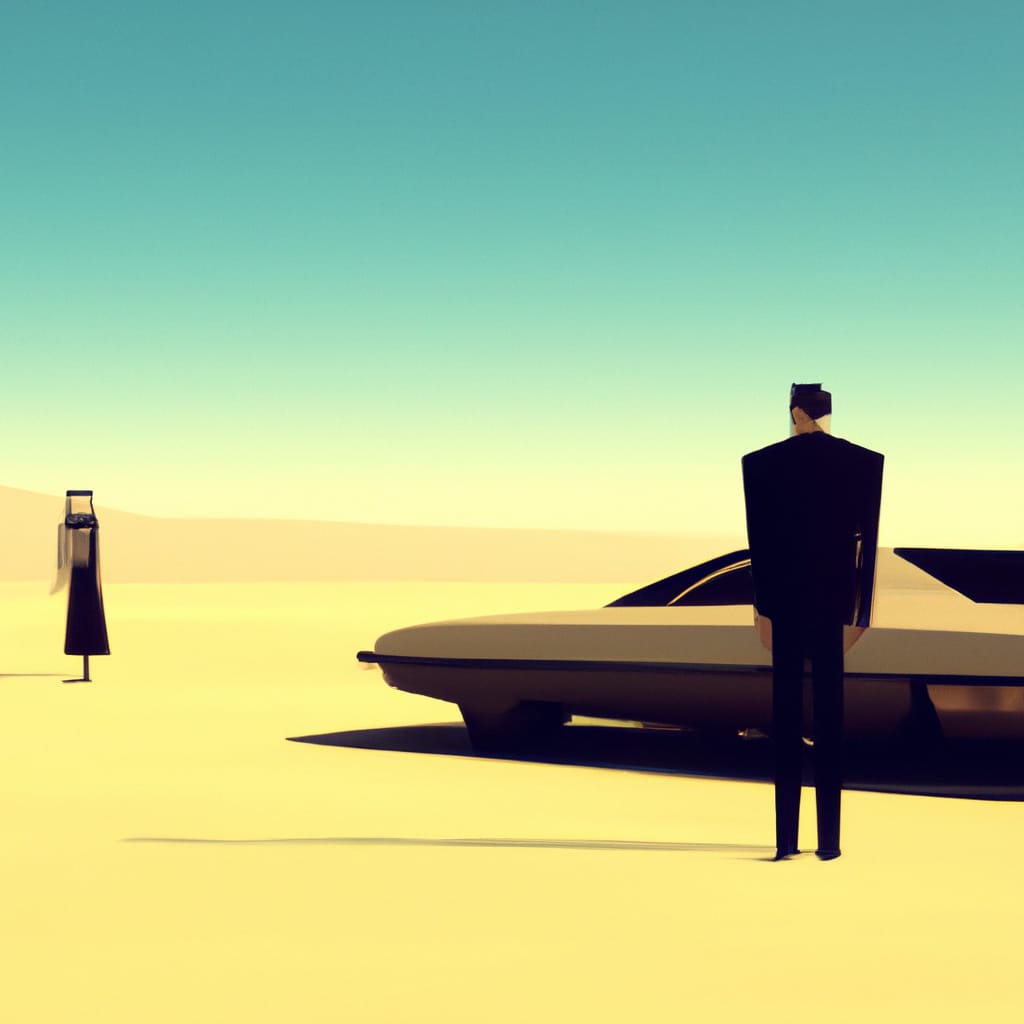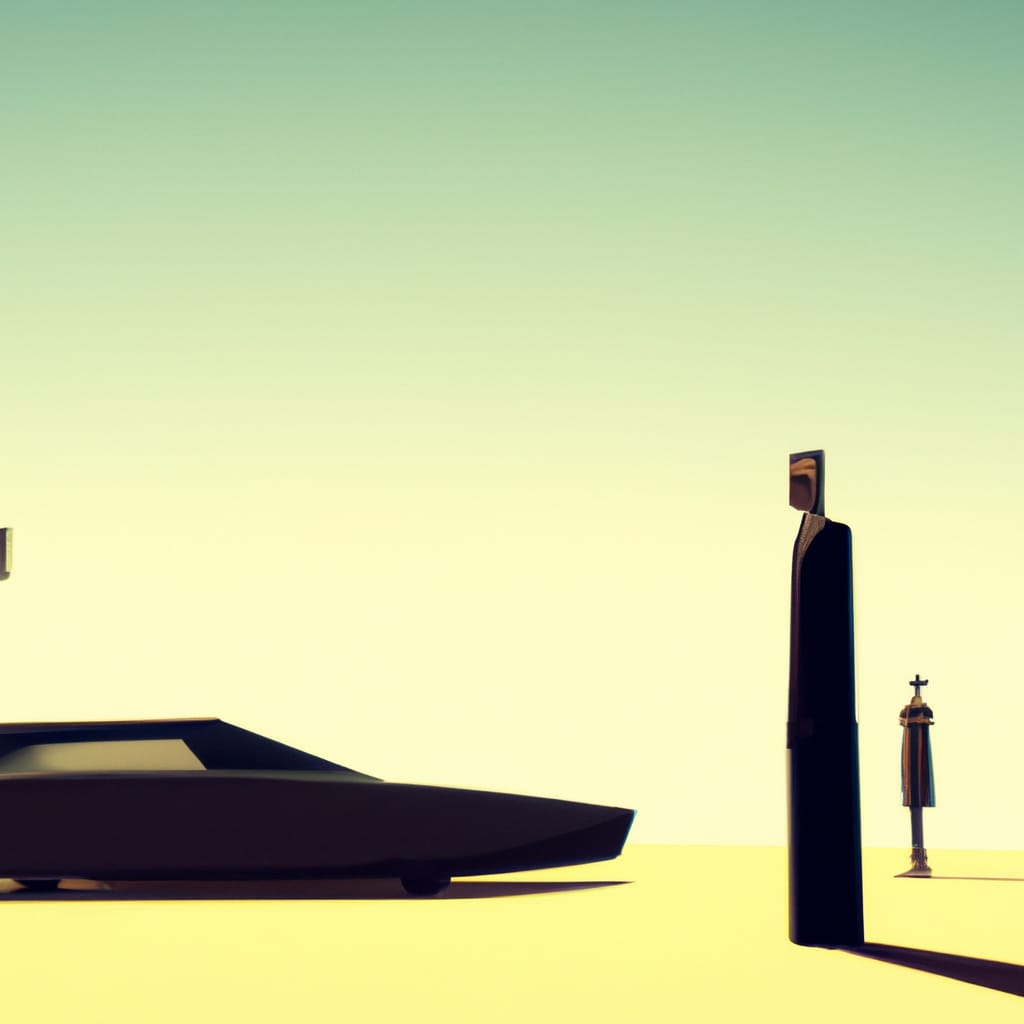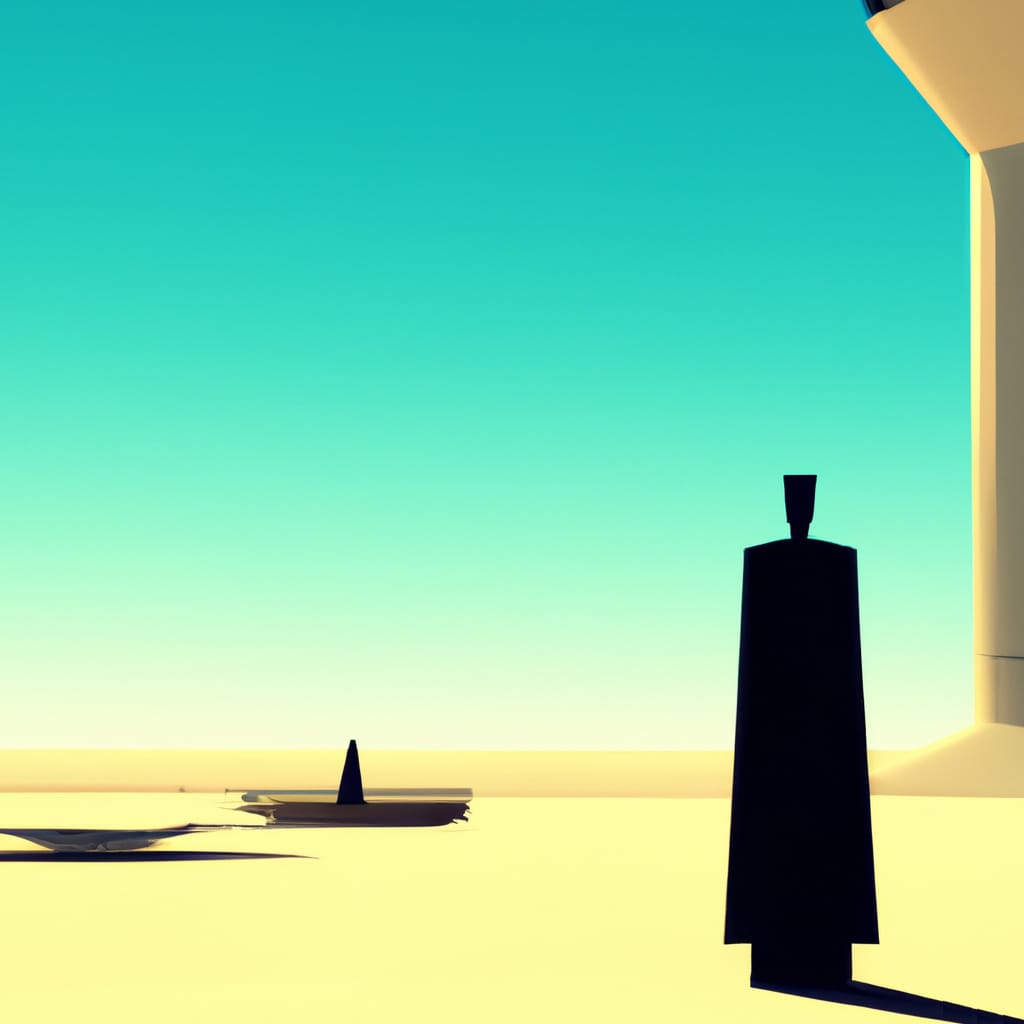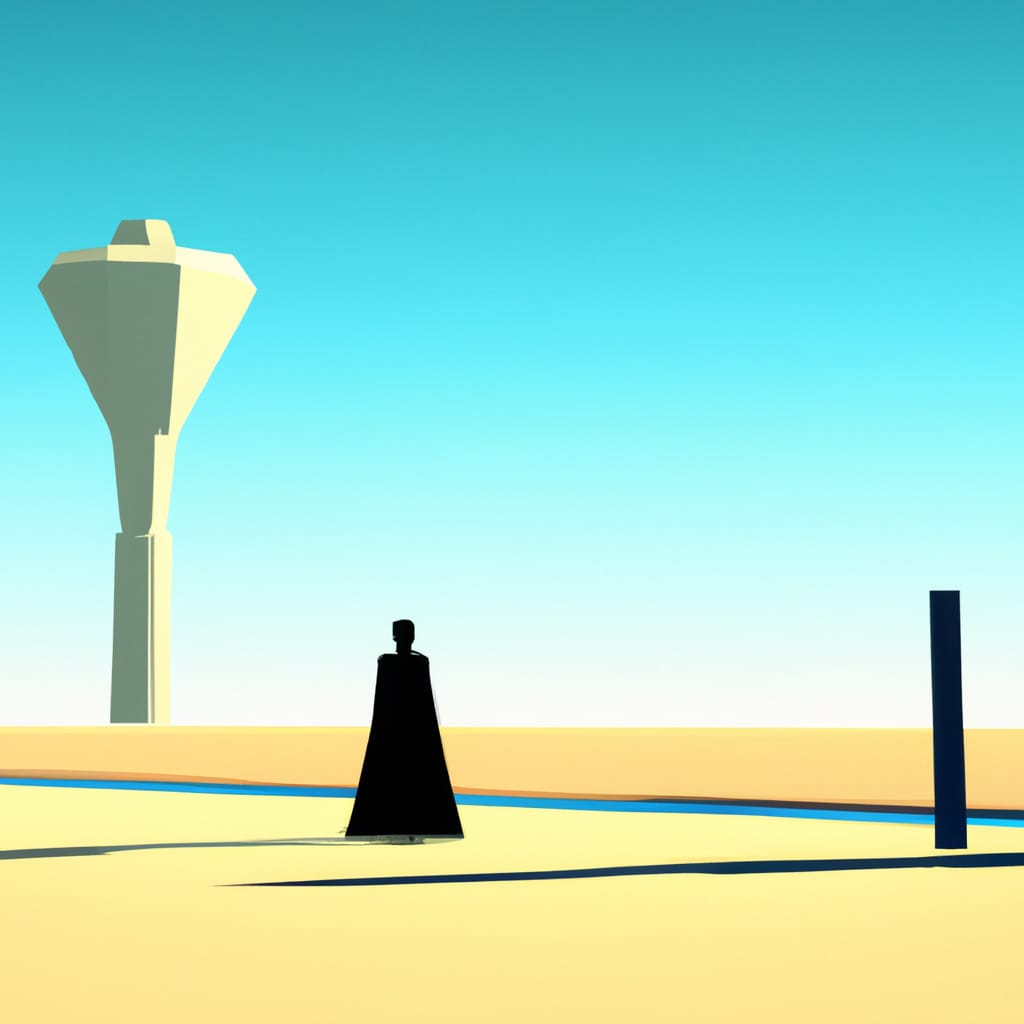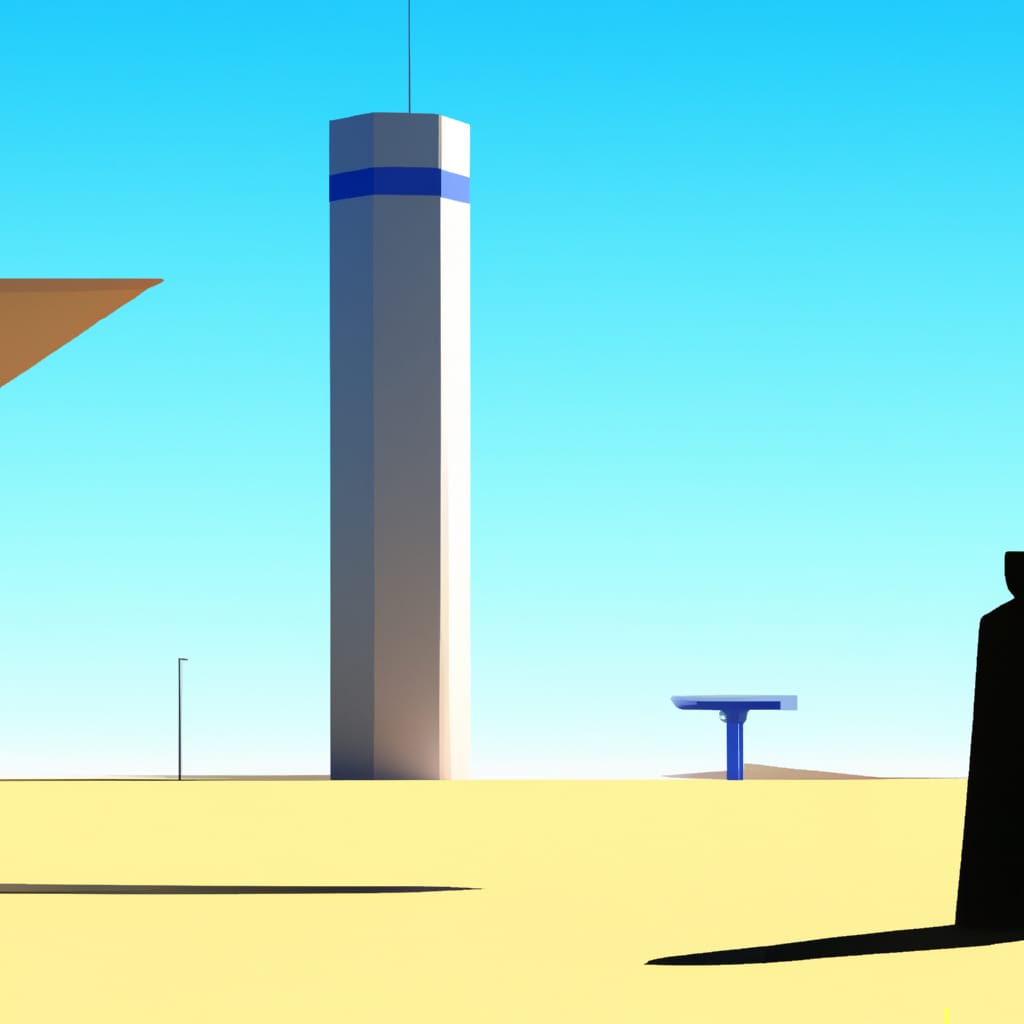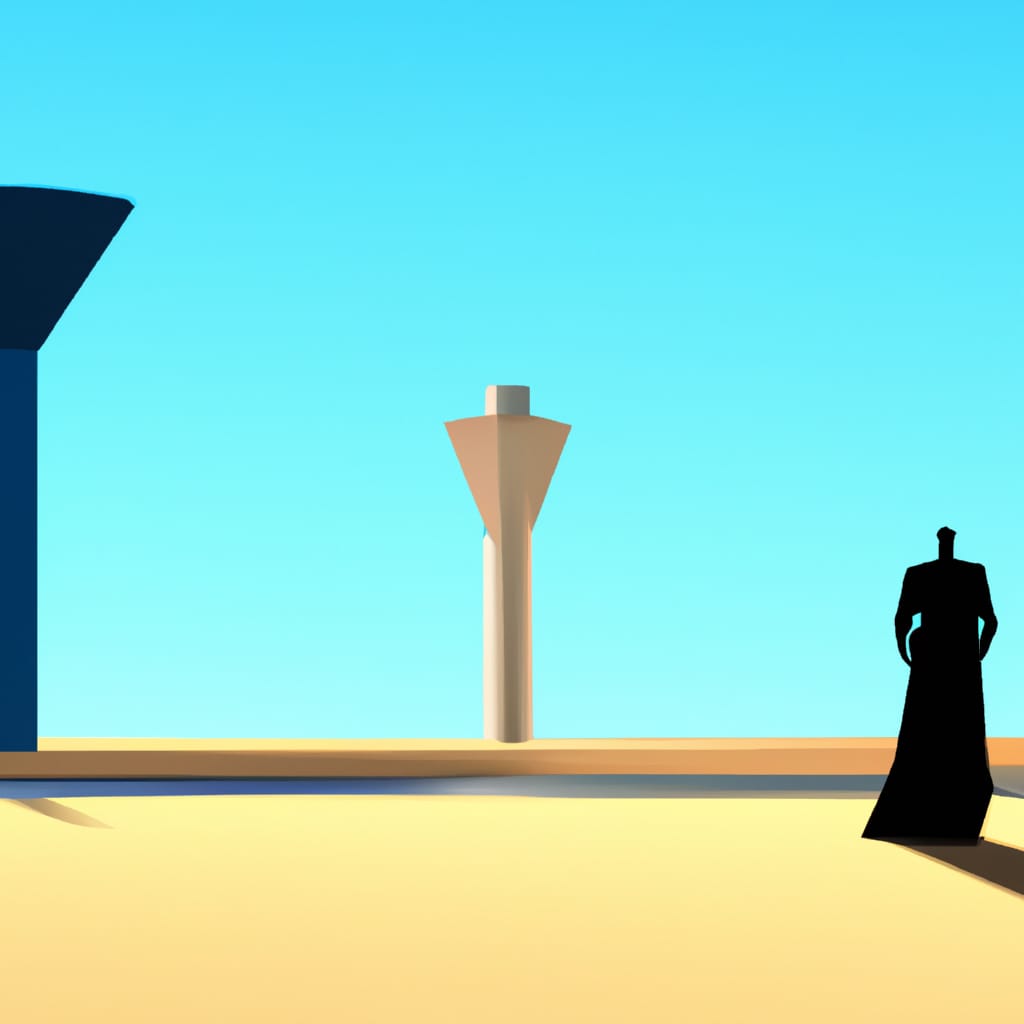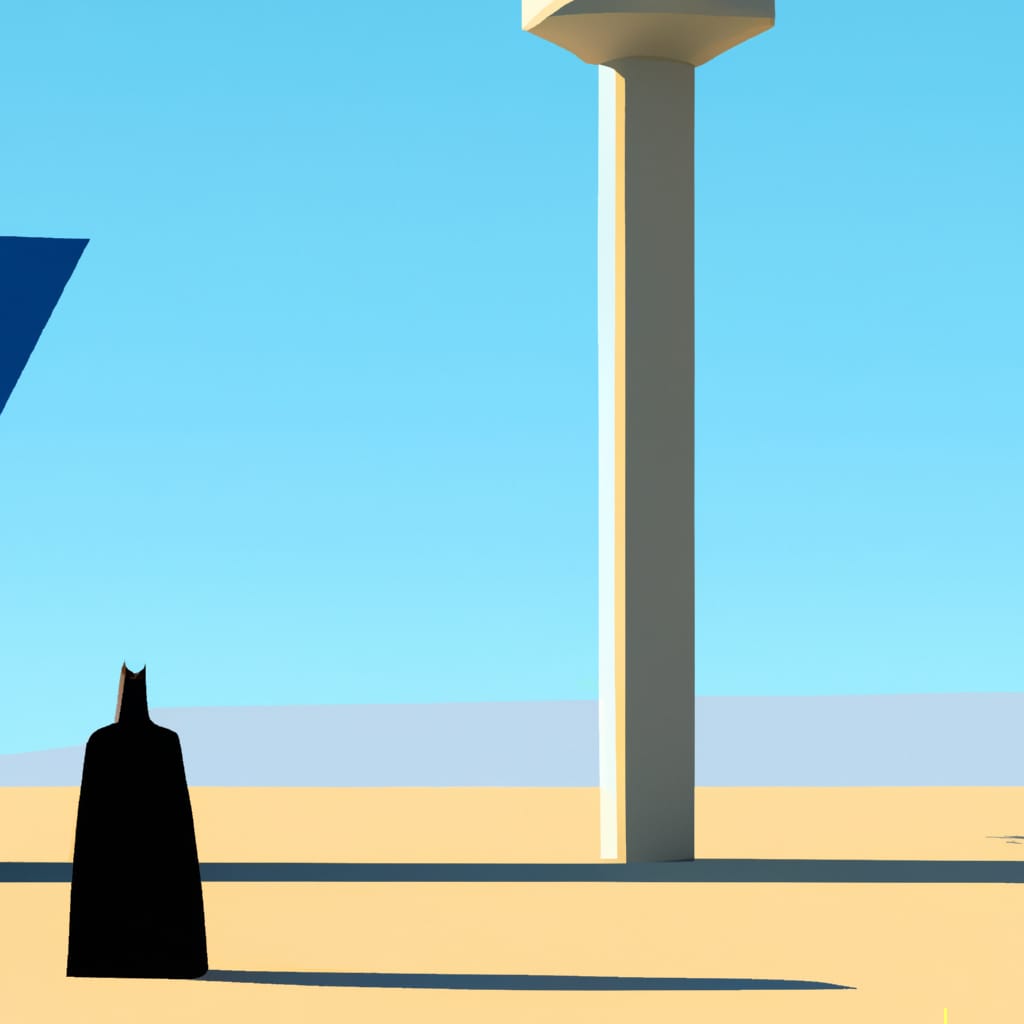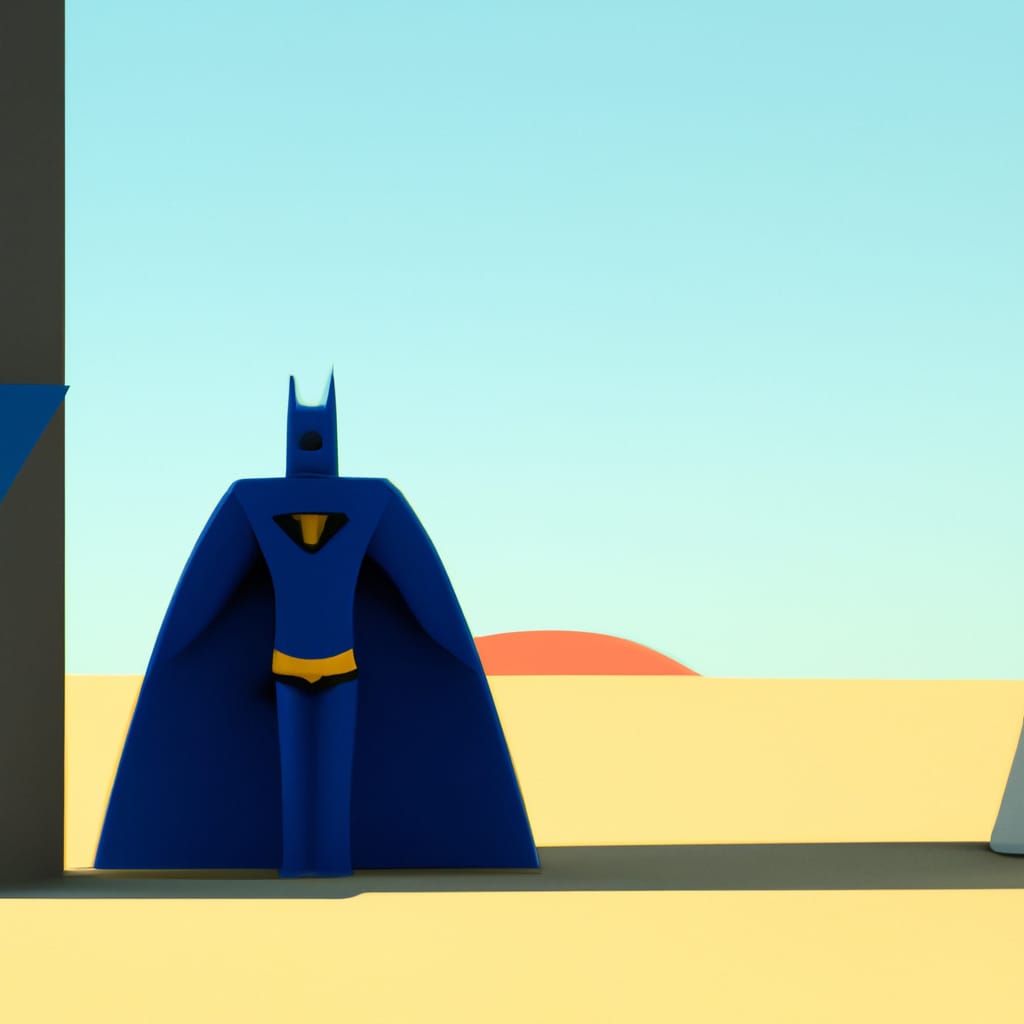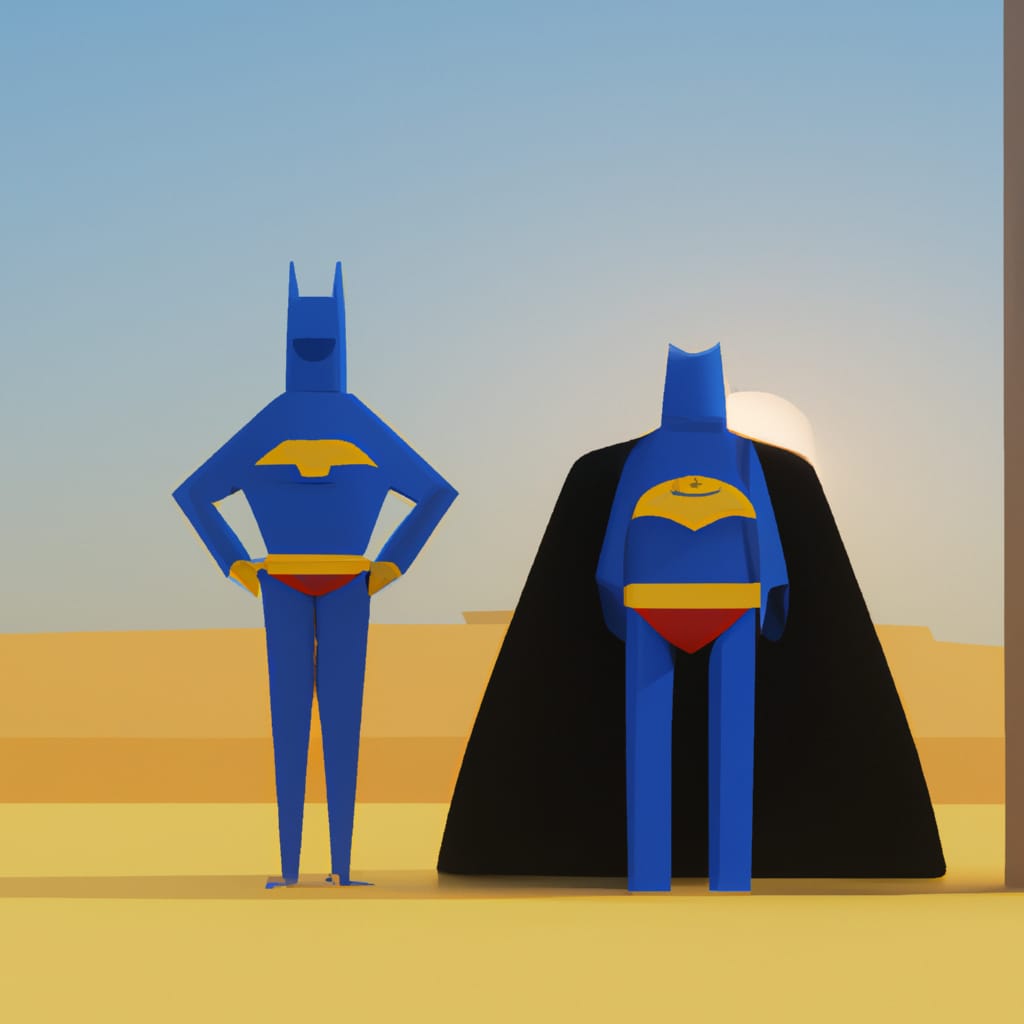Starting with a 1970’s tourist shot of an elderly couple having a break with their limousine in a desert-like landscape, the AI sequencing scans all the motif elements in the sequential episodes: the luxury sedan, the woman in the desert, High Noon, water towers amid deadly drought, until finally, in the emptiness of the desert, first Batman and finally Superman appear. “What was the AI thinking?” is a question that we have long known to be empty. By means of language – desert, woman, man, limousine – associations and variations appear that seem to come from the spectrum of topics, i.e. also from the linguistic: Water, danger, fiction, encounter. As light and clichéd as these “associated” elements initially appear, they continue to develop in a straightforward and at the same time multifaceted manner: vectors point the way. They are vectors of meaning that orient themselves on linguistic meaning and always enter into new constellations and create motifs; they are at the same time formal vectors that orient themselves on colors, proportions, surfaces, and much more. No one can think or know what connections they will finally make in the “deep learning” process, just as someone who gives a direction thereby does not know and cannot know what will appear in the dimension of temporality on the further way in this direction. In this respect, the semi-conscious exploratory course of the user and his careful or also spontaneous micro-decisions are directly reflected in the process of the vector constellations – but show substantially a different quality. It is, so to speak, an analogous process.

